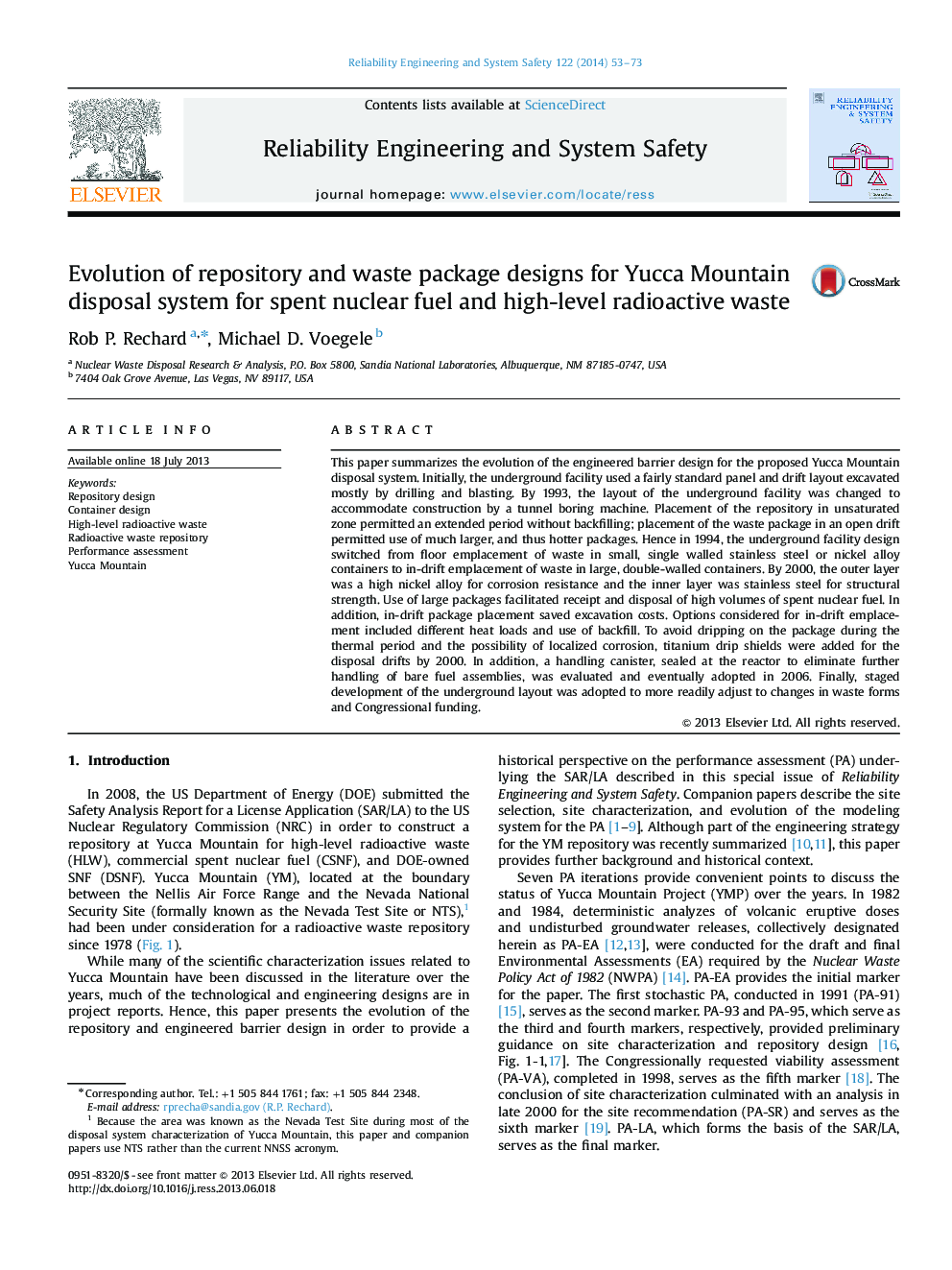| کد مقاله | کد نشریه | سال انتشار | مقاله انگلیسی | نسخه تمام متن |
|---|---|---|---|---|
| 805596 | 1468248 | 2014 | 21 صفحه PDF | دانلود رایگان |
• Progression of events associated with repository design to accommodate tunnel boring machine and in-drift waste package emplacement are discussed.
• Change in container design from small, single-layered stainless steel vessel to large, two-layered nickel alloy vessel is discussed.
• The addition of drip shield to limit the possibility of localized corrosion while package is hot is discussed.
• The addition of a transportation, aging, and disposal canister to avoid handling bare assemblies at the repository is discussed.
This paper summarizes the evolution of the engineered barrier design for the proposed Yucca Mountain disposal system. Initially, the underground facility used a fairly standard panel and drift layout excavated mostly by drilling and blasting. By 1993, the layout of the underground facility was changed to accommodate construction by a tunnel boring machine. Placement of the repository in unsaturated zone permitted an extended period without backfilling; placement of the waste package in an open drift permitted use of much larger, and thus hotter packages. Hence in 1994, the underground facility design switched from floor emplacement of waste in small, single walled stainless steel or nickel alloy containers to in-drift emplacement of waste in large, double-walled containers. By 2000, the outer layer was a high nickel alloy for corrosion resistance and the inner layer was stainless steel for structural strength. Use of large packages facilitated receipt and disposal of high volumes of spent nuclear fuel. In addition, in-drift package placement saved excavation costs. Options considered for in-drift emplacement included different heat loads and use of backfill. To avoid dripping on the package during the thermal period and the possibility of localized corrosion, titanium drip shields were added for the disposal drifts by 2000. In addition, a handling canister, sealed at the reactor to eliminate further handling of bare fuel assemblies, was evaluated and eventually adopted in 2006. Finally, staged development of the underground layout was adopted to more readily adjust to changes in waste forms and Congressional funding.
Journal: Reliability Engineering & System Safety - Volume 122, February 2014, Pages 53–73
